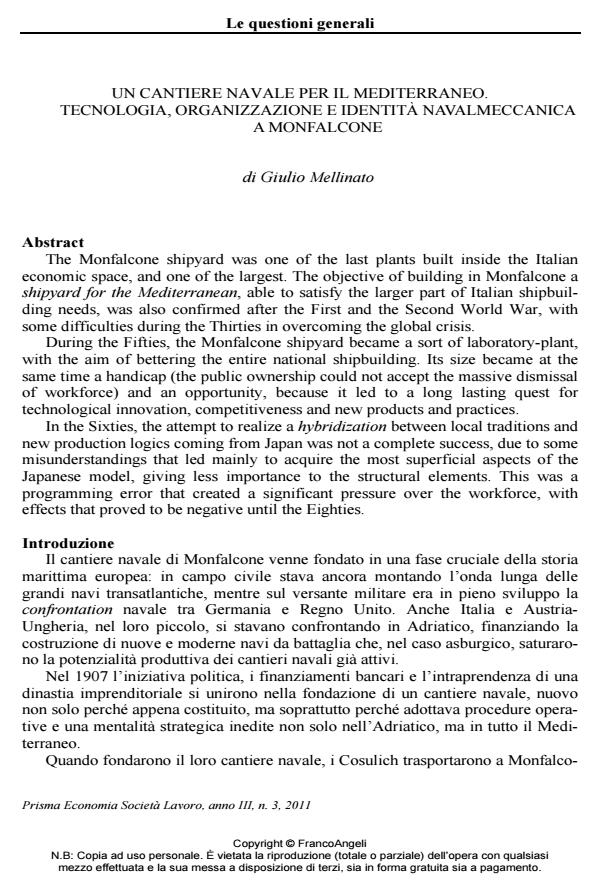Un cantiere navale per il mediterraneo. tecnologia, organizzazione e identità navalmeccanica a Monfalcone
Titolo Rivista PRISMA Economia - Società - Lavoro
Autori/Curatori
Anno di pubblicazione 2012 Fascicolo 2011/3
Lingua Italiano Numero pagine 13 P. 63-75 Dimensione file 692 KB
DOI 10.3280/PRI2011-003006
Il DOI è il codice a barre della proprietà intellettuale: per saperne di più
clicca qui
Qui sotto puoi vedere in anteprima la prima pagina di questo articolo.
Se questo articolo ti interessa, lo puoi acquistare (e scaricare in formato pdf) seguendo le facili indicazioni per acquistare il download credit. Acquista Download Credits per scaricare questo Articolo in formato PDF

FrancoAngeli è membro della Publishers International Linking Association, Inc (PILA)associazione indipendente e non profit per facilitare (attraverso i servizi tecnologici implementati da CrossRef.org) l’accesso degli studiosi ai contenuti digitali nelle pubblicazioni professionali e scientifiche
The Monfalcone shipyard was one of the last plants built inside the Italian economic space, and one of the largest. The objective of building in Monfalcone a shipyard for the Mediterranean, able to satisfy the larger part of Italian shipbuilding needs, was also confirmed after the First and the Second World War, with some difficulties during the Thirties in overcoming the global crisis. During the Fifties, the Monfalcone shipyard became a sort of laboratory-plant, with the aim of bettering the entire national shipbuilding. Its size became at the same time a handicap (the public ownership could not accept the massive dismissal of workforce) and an opportunity, because it led to a long lasting quest for technological innovation, competitiveness and new products and practices. In the Sixties, the attempt to realize a hybridization between local traditions and new production logics coming from Japan was not a complete success, due to some misunderstandings that led mainly to acquire the most superficial aspects of the Japanese model, giving less importance to the structural elements. This was a programming error that created a significant pressure over the workforce, with effects that proved to be negative until the Eighties.
, Un cantiere navale per il mediterraneo. tecnologia, organizzazione e identità navalmeccanica a Monfalcone in "PRISMA Economia - Società - Lavoro" 3/2011, pp 63-75, DOI: 10.3280/PRI2011-003006